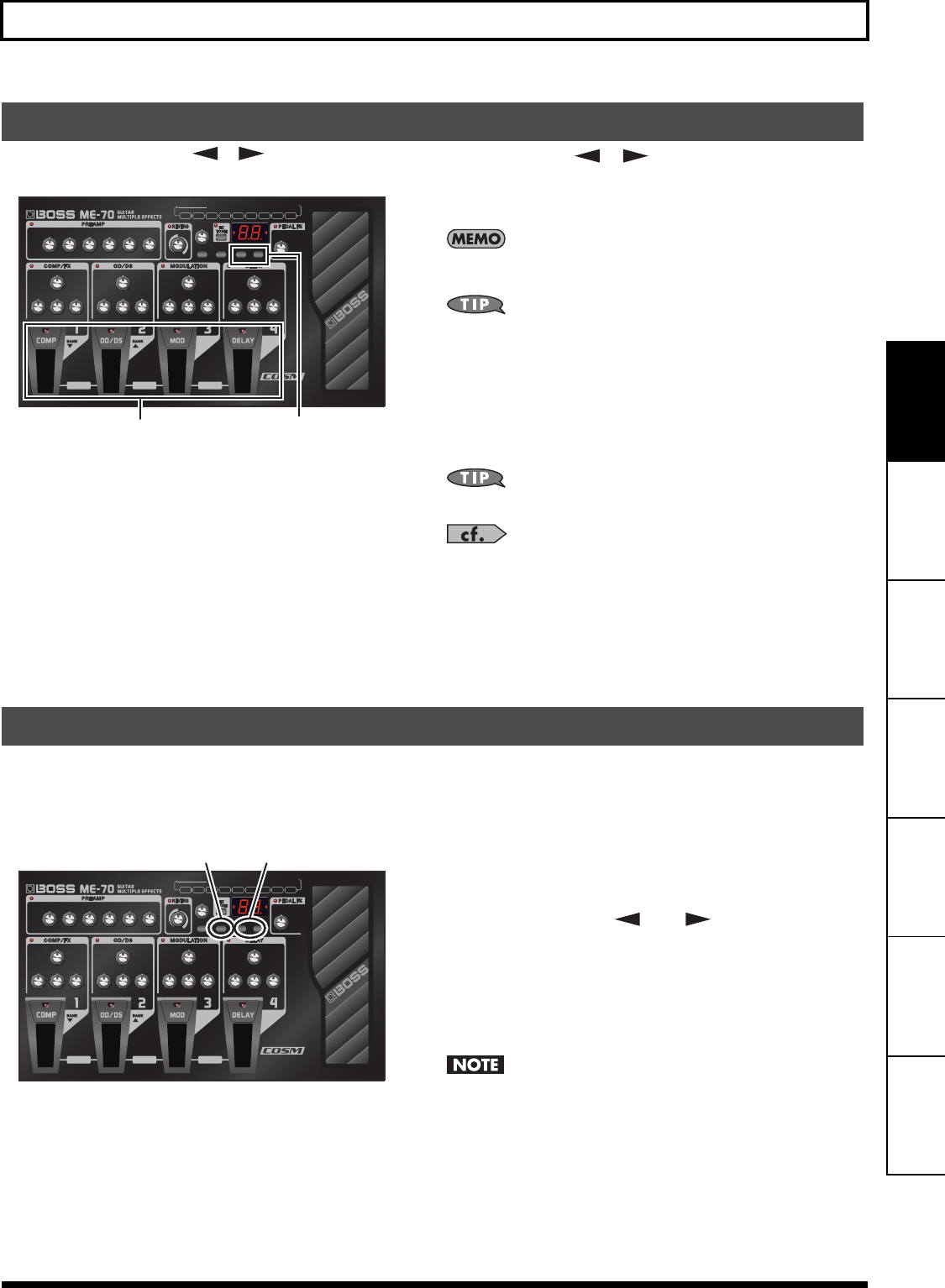
E-11
Saving/Calling Up and Using Tones (Memory Mode)
Español Português NederlandsItalianoFrançaisDeutschEnglish
To switch patches, use BANK [ ] [ ] and the number pedals
(1-4).
1. Press BANK [] [].
Choose the bank number to which you want to switch.
The displayed bank number flashes. (At this time, the tones are not yet
switched.)
For the bank number, you can choose a user bank from U1 through U9 or a
preset bank from P1 through P9.
Pressing number pedals 1 and 2 at the same time enables bank selection using
number pedals 1 and 2. After choosing the bank, you confirm the selection by
pressing number pedal 3 or 4.
2. Press any one of the number pedals from 1 through
4.
The unit switches to the patch with in the bank number you chose in
Step 1.
When you're selecting a patch within the same bank, you can skip Step 1.
You can also switch bank numbers using a foot switch. For more information,
read “Using External Foot Switches” (p. E-13).
Calling Up Tones (Patches)
21
In Memory mode, editing effects or changing the noise-suppressor
threshold (NS THRES) is not possible.
When you want to make these changes, put the unit in Memory Edit
mode.
1. Refer to “Calling Up Tones (Patches)” and call up the
patch whose settings you want to change.
2. Press [EDIT/EXIT].
The unit switches to Memory mode and “Ed” appears in the display.
3. Use the controls, pedals, and buttons to modify the
tone.
In Memory Edit mode, in Manual mode, the number pedals switch
effects on and off, and [ ] and [ ] manipulate the NS THRES
parameter.
4. Press [EDIT/EXIT].
The unit returns to Memory mode.
5. If you want to save the tone whose settings you've
changed, carry out a patch-write operation (p. E-10).
Until you perform a patch-write operation, switching off the power or changing
patches will cause any tones you've created to be lost.
Changing Tone Settings (Memory Edit Mode)
32, 4
ME-70_e1.book 11 ページ 2008年11月5日 水曜日 午後5時39分


















